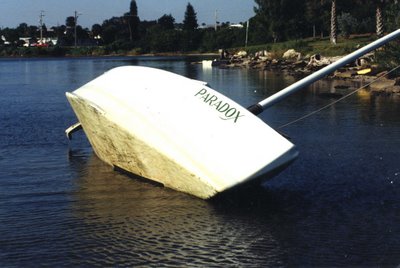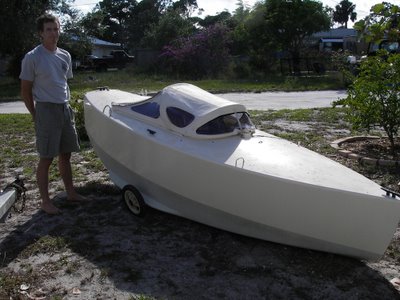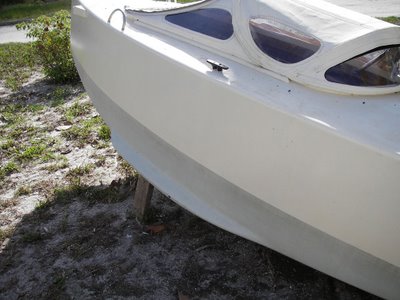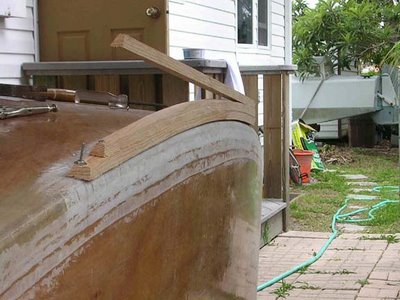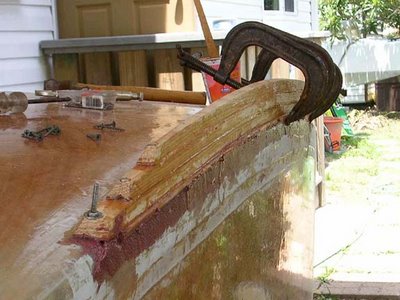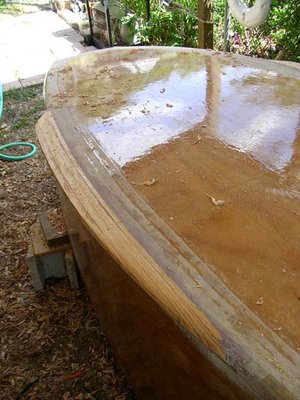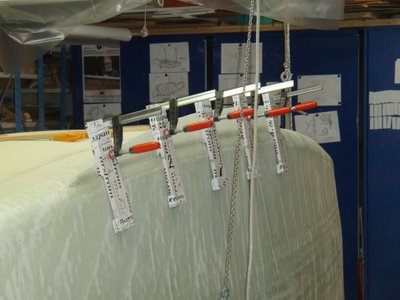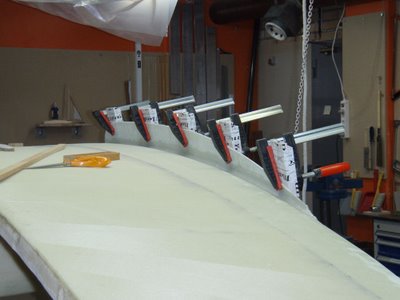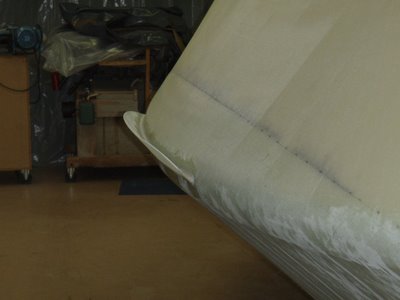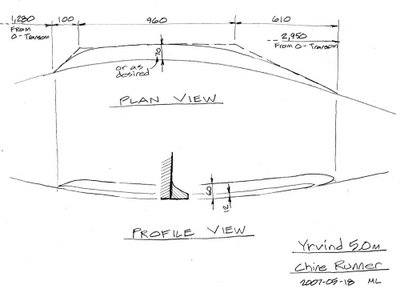1985 designed and built Matt SWAMP THING 4m long 1.08 beam 19 cm draft with a cruising weight of 400 kilos she was the first boat to have chinerunners. Other boats based on the same concept is PARADOX and ENIGMA.
I consider it the most important innovation for small boats during the 20th century.
Here is PARADOX chinerunner.
Here is Matt with ENIGMA.
Here is a close up at ENIGMAS chinerunner.
This is how Matt did ENIGMAs chinerunner,
YRVIND ½ is a composite boat so I use a different technice.
First I attach plywood pieces insulated against epoxy with packing tape.
To them I clamp a glass fibre sheet. I fasten it to the hull with a fillet.
Now this shelf is ready to recieve several layers of glass fibre. As they are exposed I make them strong about 20 mm thick or about three quarter of an inch.
When i take the boat outside I will grind it to a nice shape.
Here is a drawing Matt made for a bigger boat.
The chinerunner concept looks simple, but dont fool yourself into thinking that they are just add ons. The idea of preventing leeway with the help of chinerunners, like most successful fluid flow devices, including the bumble bee, is a sophisticated concept. Matt is also taking help of the the lifting body concept and a large rudder.
The boat have to be relatively heavy to sink deep enough in the water, but small cruisers are not light. The ratio beam to draft has to fall within a narrow range. PARADOX beam is 1.23 m her draft is 0.23 m. YRVIND ½ has a beam of 1.3m and a draft of 0.22m
The concept gives shallow draft with no moving parts. The hull-shape gives a lot of stability as it like the catamaran quickly moves a lot of buoyancy to lee for a small angle of heel. It also gives a lot of flat floor on the inside, welcome on a small boat. It is also a hull-shape easy to build. Almost to good to be true. Strange that not more people take advantage of this windfall which has been around for quarter of a century.

